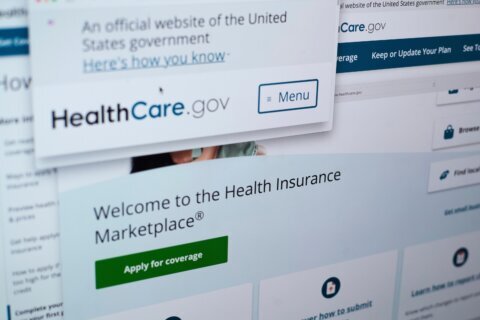More people are teleworking, and those who are commuting are using transit less and less, according to a recent survey by the Metropolitan Washington Council of Governments.
The survey shows a five-fold increase in teleworking, a three-fold decrease in transit and the largest drop in drive-alone trips since 2010.
The new data is from the Commuter Connections’ 2022 State of the Commute Survey Report.
“It’s astronomical,” said Nicholas Ramfos, Commuter Connections Director at the Metropolitan Washington Council of Governments, about the increase in people teleworking. “That really just kind of upended all of the traditional commute patterns.”
The information comes from a survey of more than 8,000 employed adults who travel to and from work in the D.C. area. The results are used to make regional planning decisions to reduce vehicle trips, vehicle miles of travel, and emissions resulting from commute travel.
It was last conducted in 2019. Of those surveyed, 66% reported teleworking at least occasionally. That’s up from 35% in 2019.
Ramfos said the pandemic was likely a big factor in this increase, and it impacted how people traveled.
“I think it’s just going to be interesting to see how that all pans out, and particularly as more people start returning to the office, as we move forward,” he said.
Employees who teleworked replaced 48% of all weekly commute trips in 2022, up from 10% in 2019, the survey found.
Those people who drive alone to work accounted for 41% of weekly commute trips, which is the lowest share of those types of trips recorded since the survey began. However, for those traveling to work and not teleworking, driving alone continued to be the primary mode of transportation for commuters — 78% of trips to outside work locations were by driving alone, which is an increase of 14% from 2019.
“A lot of folks that are working from home since the pandemic were either former transit riders or they may have been carpooling or vanpooling,” Ramfos said.
For those who commute to work, taking a train or a bus is happening less frequently. Transit experienced a major decrease, accounting for 8% of trips in 2022 versus 24% of trips in 2019, according to the survey.
The reasoning for that decrease? Many taking the survey said pandemic-related health concerns were the biggest deterrent.
What does this mean for the future?
“I think hybrid telework is definitely here to stay for, at least for the short term and even foreseeable future, and I think it’s going to be a lot more difficult to convince individuals, even if it’s that one or two days that they’re going into the office, to hop on a bus or train or even, you know, in a carpool or vanpool,” Ramfos said.
Overall, satisfaction levels remained about the same compared to the 2019 report, despite people reporting shorter and easier commute times. But that satisfaction differs when it comes to transit riders. Those transit riders in 2022 reported commute difficulty and lower commuter satisfaction than those who got to work by other means, and they reported greater levels of dissatisfaction than transit riders in 2019.
See the full report online.








